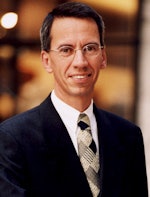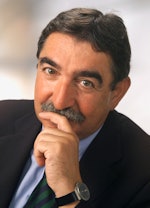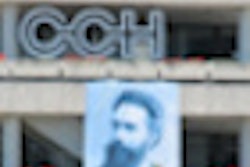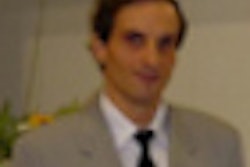
Marking 20 years of collaboration, the German and Austrian national radiological societies are preparing to hold their sixth joint congress in tandem with the 92nd German Radiology Congress. The historic event will take place in Hamburg from 1 to 4 June, and will address the impact of radiology in supporting clinical workup, both in diagnosis and therapy.
"Caring for patients is only possible with interdisciplinary teamwork. The radiologist is just as responsible for a patient as the ward clinician," said Dr. Walter Hruby, past president of the Austrian Röntgen Society and co-president of next week's congress, along with Dr. Bernd Hamm from Berlin.
Germany and Austria, along with other countries in Europe, have to deal with the health problems of an aging population. The challenge of useful early disease detection will remain the main motor behind diagnostic innovations, including the development of tailor-made procedures and personalized therapies, according to Hruby, who is head of the radiology department at the Danube Hospital in Vienna.

 Aging populations in Germany and Austria is one factor driving diagnostic and interventional developments and propelling radiologists to the heart of patient management, according to Dr. Walter Hruby (right). He is co-president of next week's Hamburg conference, along with Dr. Bernd Hamm (left).
Aging populations in Germany and Austria is one factor driving diagnostic and interventional developments and propelling radiologists to the heart of patient management, according to Dr. Walter Hruby (right). He is co-president of next week's Hamburg conference, along with Dr. Bernd Hamm (left).
"With up-to-date diagnostic possibilities, radiologists take a central position in making the appropriate diagnosis at the earliest possible stage, often before the manifestation of the first symptoms," Hruby said, pointing to the need for resources to ensure the continual transfer of research progress to the population. "Radiologists should strive toward a diagnostic and therapeutic procedure that is 100% right for the individual patient."
This year the one session in English, the international Röntgen lecture, will be presented by Dr. Anne Osborn, a professor from the Medical University of Utah in the U.S. German-speaking delegates are expected from other countries besides Germany and Austria. Among them are members of the Germany, Austria, Switzerland, and Turkey (GAST) radiology association, which last year held its first meeting in Izmir, Turkey.
A pivotal theme at the joint congress will be "Radiology meets the general practitioner." Saturday's session will outline how cooperation between radiology and general practice (GP) clinics is fundamental to primary care and how such cooperation can be improved with modern technology. The emphasis will be on speeding up the process of information gathering and dissemination through IT; delegates will hear how online reporting and electronic distribution of the radiologist's reports within the hospital and to GPs can help to speed up the diagnostic process.
A wide range of sessions will be presented in fields such as sports medicine, breast, chest, neuro and stroke workup, all of which are now the backbone of routine clinical practice. Traditional refresher courses will complement this year's sessions for the younger radiologist in the "Fit for Specialization" student program, and the congress will also feature courses on radiation safety.
"Diversity is not just present in the sessions on systems and modalities used for this 'whole body' discipline, but also in the courses aimed at its different professionals, including students, residents, radiographers, and technicians," Hruby said.
 The city of Hamburg will host next week's joint German-Austrian congress. Image courtesy of www.mediaserver.hamburg.de, Christian Spahrbier.
The city of Hamburg will host next week's joint German-Austrian congress. Image courtesy of www.mediaserver.hamburg.de, Christian Spahrbier.
He explained how new developments were widening radiology's remit, continually expanding the radiologist's role. "The growing field of interventional radiology is allowing many therapeutic procedures such as the drainage of most abscesses to be routinely carried out by radiologists rather than by surgeons only. Delegates will benefit from sessions on such routine interventional techniques," he said.
They will also hear the latest information about the impact of PACS on practice and workflow, both in sessions and at the technical exhibition. PACS is very widely used in Germany and Austria, according to Hruby. He was keen to underline that sessions pertaining to PACS and other innovations such as virtual colonoscopy will be medically -- not technically -- driven.
"All these new technologies are tools for the radiologists to improve diagnostic accuracy and to make new non- or minimally invasive diagnostic and therapeutic procedures possible. However, it is doctors' knowledge and experience that determines their effective utilization," he said.
Osborn's keynote lecture, titled "Black dots and white spots in the brain," is due to take place on the morning of Friday, 3 June. She defines black dots as multifocal lesions measuring negative Hounsfield units, and they are confined to two substances: air and fat. White spots, on the other hand, are multifold hyperdensities of markedly elevated Hounsfield units, and essentially consist of the differential diagnosis of multiple intraparenchymal calcifications.
"The differential diagnosis of white spots on MRI depends on imaging sequence," she explained. "We begin with a discussion of T1 white spots in the brain, focusing on the common, less common, and rare but important causes of multifocal hyperintensities on T1-weighted MR images. These include mineral deposition, artifacts, subacute blood, proteinaceous substances, melanin, congenital lesions in NF1 and TSC, and fat."
For more details, visit the congress website. As part of AuntMinnieEurope.com's coverage of the meeting, we will be publishing guest columns and blogs from attendees at the German Radiology Congress.



















